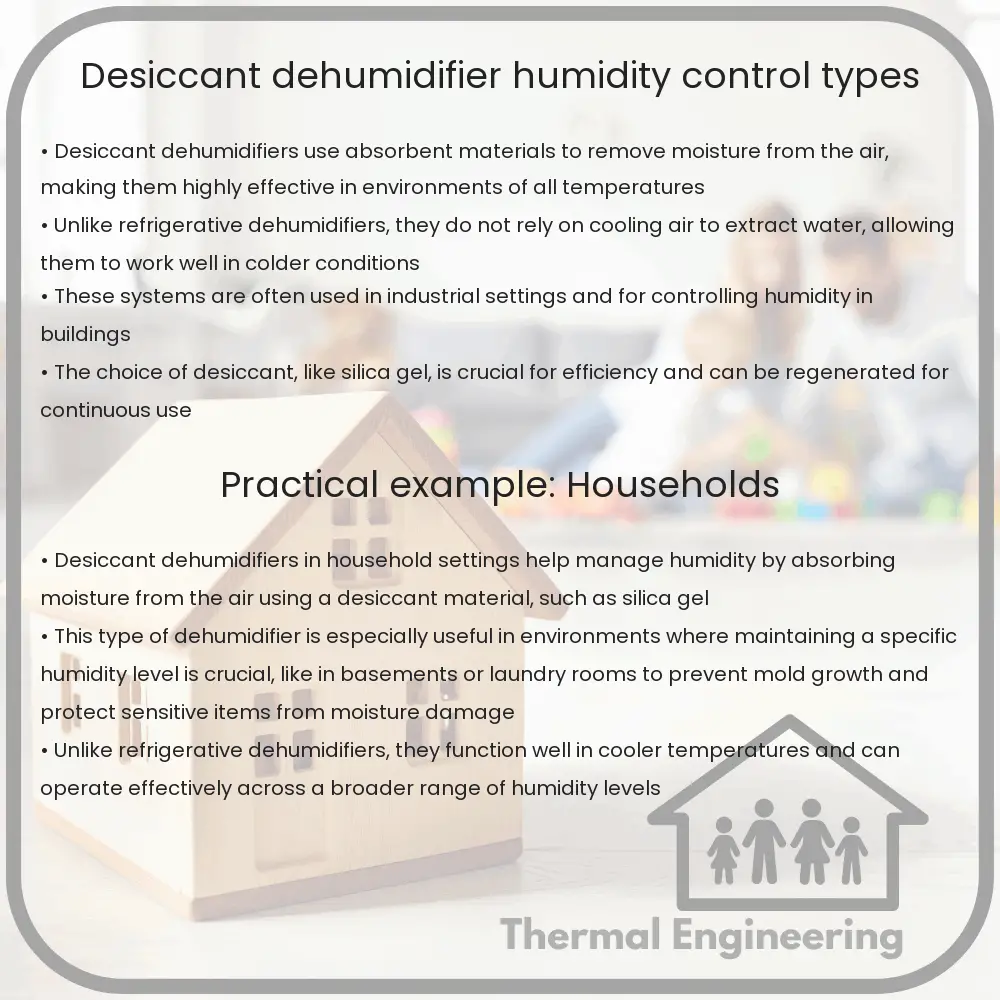Learn about how desiccant dehumidifiers control humidity through adsorption, their types, and applications across industries.

Understanding Desiccant Dehumidifiers and Humidity Control
Desiccant dehumidifiers, a vital tool for managing humidity in various environments, operate differently from the more common refrigerative dehumidifiers. Instead of using condensation (typical in refrigerative systems) to remove moisture from the air, desiccant dehumidifiers use a chemical process to adsorb moisture. This makes them particularly useful in environments where maintaining a low humidity is crucial, such as in industrial processes and preservation.
How Desiccant Dehumidifiers Work
The core component of a desiccant dehumidifier is a desiccant material which is a substance that naturally attracts and holds water vapor. Common desiccants include silica gel, activated alumina, and molecular sieves. The process involves air passing through the desiccant material. As the air passes through, moisture adheres to the desiccant, effectively drying the air.
Once the desiccant material becomes saturated with water, it must be “regenerated” or dried. This is typically done by heating the desiccant to release the accumulated water, which is then vented outside. The regeneration process is essential for continuous operation and efficiency of the dehumidifier.
Types of Desiccant Dehumidifiers
- Solid Desiccant Dehumidifiers: These systems use a solid wheel infused with desiccant material. Air passes through the wheel and moisture is absorbed. The wheel rotates, and a separate air stream heated specifically for regeneration dries the desiccant.
- Liquid Desiccant Dehumidifiers: These dehumidifiers use a liquid desiccant solution, typically made of glycol or brine, which absorbs moisture from the air. The solution is then regenerated by heating it to release the moisture before re-cooling it for re-use.
Advantages of Desiccant Dehumidification
- Effectiveness in Cold Environments: Unlike refrigerative dehumidifiers, which become less efficient at lower temperatures, desiccant dehumidifiers maintain effectiveness regardless of the ambient temperature.
- Energy Efficiency: Modern desiccant dehumidifiers can be integrated with other heating and cooling systems to utilize waste heat for regeneration, reducing overall energy consumption.
- Improved Air Quality: Desiccant dehumidifiers can remove pollutants and odors along with moisture, contributing to better indoor air quality.
- Versatility: These systems can be designed for use in various scales, from portable units for domestic use to large industrial systems.
Applications of Desiccant Dehumidifiers
- Industrial Manufacturing: Sensitive manufacturing processes, like in the pharmaceutical or food industries, often require precise humidity control to maintain product quality.
- Water Damage Restoration: Desiccant dehumidifiers can speed up the drying process after water damage, preventing the growth of mold and mildew.
- HVAC Systems: Integration into Heating, Ventilation, and Air Conditioning (HVAC) systems helps to control humidity in large buildings, improving comfort and structural integrity.
- Storage and Preservation: These dehumidifiers are also used to protect goods in storage from moisture damage, particularly in museums and libraries where humidity control is critical.
Understanding the working principle and types of desiccant dehumidifiers provides valuable insight into their importance in many commercial and industrial applications. They play a crucial role in optimizing conditions for processes, preservation, and improving overall air quality, highlighting their significance in effective humidity control strategies.